Self-Attention Network for Partial-Discharge Diagnosis in Gas-Insulated Switchgear
Abstract
1. Introduction
- Self-attention is introduced for the first time to classify the PRPDs in a GIS. Self-attention offers the advantages of classification accuracy and computational efficiency compared with DNNs, CNNs, and RNNs [41,42,46] because it can capture the relevance among the phases of the PRPDs by considering their entire interaction sequence input regardless of distance [44].
- The LSTM self-attention method is also considered. In the LSTM self-attention model, the self-attention mechanism assists the LSTM to simultaneously compute and focus on the important information from the data inputs, which improve the classification accuracy of the PRPD classification relative to that of the LSTM RNN [46].
- The experimental results reveal that our models outperform the previous RNN model [46] in terms of the PRPD classification accuracy with a lower complexity because the self-attention mechanism recognizes the different relevance of the information among the inputs and takes advantage of simultaneous computation [45].
2. Preliminaries
2.1. PRPD Measurements
2.2. On-Site Noise Measurements
3. Proposed Methods
3.1. Proposed SANPD
3.2. Proposed LSANPD
3.3. Training
4. Performance Evaluation
5. Conclusions
Author Contributions
Funding
Conflicts of Interest
References
- Bolin, P.; Koch, H. Gas insulated substation GIS. In Proceedings of the IEEE/PES Transmission and Distribution Conference and Exposition, Chicago, IL, USA, 21–24 April 2008; pp. 1–3. [Google Scholar] [CrossRef]
- Tang, J.; Zhuo, R.; Wang, D.; Wu, J.; Zhang, X. Application of SA-SVM Incremental Algorithm in GIS PD Pattern Recognition. J. Electr. Eng. Technol. 2016, 11, 192–199. [Google Scholar] [CrossRef]
- Lee, S.; Lee, B.; Koo, J.; Ryu, C.; Jung, S. Identification of insulation defects in gas-insulated switchgear by chaotic analysis of partial discharge. IET Sci. Meas. Technol. 2010, 4, 115–124. [Google Scholar] [CrossRef]
- Gao, W.; Ding, D.; Liu, W. Research on the Typical Partial Discharge Using the UHF Detection Method for GIS. IEEE Trans. Power Deliv. 2011, 26, 2621–2629. [Google Scholar] [CrossRef]
- Stone, G. Partial discharge diagnostics and electrical equipment insulation condition assessment. IEEE Trans. Dielectr. Electr. Insul. 2005, 12, 891–903. [Google Scholar] [CrossRef]
- Wu, M.; Cao, H.; Cao, J.; Nguyen, H.L.; Gomes, J.B.; Krishnaswamy, S.P. An overview of state-of-the-art partial discharge analysis techniques for condition monitoring. IEEE Electr. Insul. Mag. 2015, 31, 22–35. [Google Scholar] [CrossRef]
- Dong, M.; Zhang, C.; Ren, M.; Albarracín, R.; Ye, R. Electrochemical and Infrared Absorption Spectroscopy Detection of SF6 Decomposition Products. Sensors 2017, 17, 2627. [Google Scholar] [CrossRef]
- Judd, M.; Li, Y.; Hunter, I. Partial discharge monitoring of power transformers using UHF sensors. Part I: Sensors and signal interpretation. IEEE Electr. Insul. Mag. 2005, 21, 5–14. [Google Scholar] [CrossRef]
- Judd, M.; Farish, O.; Hampton, B. The excitation of UHF signals by partial discharges in GIS. IEEE Trans. Dielectr. Electr. Insul. 1996, 3, 213–228. [Google Scholar] [CrossRef]
- Cosgrave, J.; Vourdas, A.; Jones, G.; Spencer, J.; Murphy, M.; Wilson, A. Acoustic monitoring of partial discharges in gas insulated substations using optical sensors. IEE Proc. A Sci. Meas. Technol. UK 1993, 140, 369. [Google Scholar] [CrossRef]
- Markalous, S.; Tenbohlen, S.; Feser, K. Detection and location of partial discharges in power transformers using acoustic and electromagnetic signals. IEEE Trans. Dielectr. Electr. Insul. 2008, 15, 1576–1583. [Google Scholar] [CrossRef]
- Imad-U-Khan; Wang, Z.; Cotton, I.; Northcote, S. Dissolved gas analysis of alternative fluids for power transformers. IEEE Electr. Insul. Mag. 2007, 23, 5–14. [Google Scholar] [CrossRef]
- Faiz, J.; Soleimani, M. Dissolved gas analysis evaluation in electric power transformers using conventional methods a review. IEEE Trans. Dielectr. Electr. Insul. 2017, 24, 1239–1248. [Google Scholar] [CrossRef]
- Chai, H.; Phung, B.; Mitchell, S. Application of UHF Sensors in Power System Equipment for Partial Discharge Detection: A Review. Sensors 2019, 19, 1029. [Google Scholar] [CrossRef] [PubMed]
- Siegel, M.; Coenen, S.; Beltle, M.; Tenbohlen, S.; Weber, M.; Fehlmann, P.; Hoek, S.M.; Kempf, U.; Schwarz, R.; Linn, T.; et al. Calibration Proposal for UHF Partial Discharge Measurements at Power Transformers. Energies 2019, 12, 3058. [Google Scholar] [CrossRef]
- Piccin, R.; Mor, A.; Morshuis, P.; Girodet, A.; Smit, J. Partial discharge analysis of gas insulated systems at high voltage AC and DC. IEEE Trans. Dielectr. Electr. Insul. 2015, 22, 218–228. [Google Scholar] [CrossRef]
- Dai, D.; Wang, X.; Long, J.; Tian, M.; Zhu, G.; Zhang, J. Feature extraction of GIS partial discharge signal based on S-transform and singular value decomposition. IET Sci. Meas. Technol. 2017, 11, 186–193. [Google Scholar] [CrossRef]
- Si, W.; Li, J.; Li, D.; Yang, J.; Li, Y. Investigation of a comprehensive identification method used in acoustic detection system for GIS. IEEE Trans. Dielectr. Electr. Insul. 2010, 17, 721–732. [Google Scholar] [CrossRef]
- Chang, C.; Jin, J.; Chang, C.; Hoshino, T.; Hanai, M.; Kobayashi, N. Separation of Corona Using Wavelet Packet Transform and Neural Network for Detection of Partial Discharge in Gas-Insulated Substations. IEEE Trans. Power Deliv. 2005, 20, 1363–1369. [Google Scholar] [CrossRef]
- Zhang, X.; Xiao, S.; Shu, N.; Tang, J.; Li, W. GIS partial discharge pattern recognition based on the chaos theory. IEEE Trans. Dielectr. Electr. Insul. 2014, 21, 783–790. [Google Scholar] [CrossRef]
- Li, L.; Tang, J.; Liu, Y. Partial discharge recognition in gas insulated switchgear based on multi-information fusion. IEEE Trans. Dielectr. Electr. Insul. 2015, 22, 1080–1087. [Google Scholar] [CrossRef]
- Liu, X.W.; Mu, H.B.; Zhu, M.X.; Zhang, G.J.; Li, Y.; Deng, J.B.; Xue, J.Y.; Shao, X.J.; Zhang, J.N. Classification and separation of partial discharge ultra-high-frequency signals in a 252 kV gas insulated substation by using cumulative energy technique. IET Sci. Meas. Technol. 2016, 10, 316–326. [Google Scholar] [CrossRef]
- Gao, W.; Zhao, D.; Ding, D.; Yao, S.; Zhao, Y.; Liu, W. Investigation of frequency characteristics of typical PD and the propagation properties in GIS. IEEE Trans. Dielectr. Electr. Insul. 2015, 22, 1654–1662. [Google Scholar] [CrossRef]
- Mas’ud, A.A.; Ardila-Rey, J.A.; Albarracín, R.; Muhammad-Sukki, F.; Bani, N.A. Comparison of the Performance of Artificial Neural Networks and Fuzzy Logic for Recognizing Different Partial Discharge Sources. Energies 2017, 10, 1060. [Google Scholar] [CrossRef]
- Adam, B.; Tenbohlen, S. Classification of multiple PD Sources by Signal Features and LSTM Networks. In Proceedings of the IEEE International Conference on High Voltage Engineering and Application (ICHVE), Athens, Greece, 10–13 September 2018; pp. 1–4. [Google Scholar] [CrossRef]
- Yan, Z.; Min-Jie, Z.; Peng, Y.; Yan-Ming, L. Study on pulse source separation and location technology of UHF PD based on three-dimensional vector of pulse amplitude in time domain. In Proceedings of the IEEE International Conference on High Voltage Engineering and Application (ICHVE), Chengdu, China, 19–22 September 2018; pp. 1–4. [Google Scholar] [CrossRef]
- Nair, R.P.; Vishwanath, S.B. Analysis of partial discharge sources in stator insulation system using variable excitation frequency. IET Sci. Meas. Technol. 2019, 13, 922–930. [Google Scholar] [CrossRef]
- Banumathi, S.; Chandrasekar, S.; Montanari, G.C. Investigations on PD characteristics of vegetable oils for high voltage applications. In Proceedings of the IEEE 1st International Conference on Condition Assessment Techniques in Electrical Systems (CATCON), Kolkata, India, 6–8 December 2013; pp. 191–195. [Google Scholar] [CrossRef]
- Kunicki, M.; Nagi, L. Correlation analysis of partial discharge measurement results. In Proceedings of the IEEE International Conference on Environment and Electrical Engineering and 2017 IEEE Industrial and Commercial Power Systems Europe (EEEIC/I&CPS Europe), Milan, Italy, 6–9 June 2017; pp. 1–6. [Google Scholar] [CrossRef]
- Yang, J.; Zhang, D.; Frangi, A.; Yang, J.-Y. Two-dimensional pca: A new approach to appearance-based face representation and recognition. IEEE Trans. Pattern Anal. Mach. Intell. 2004, 26, 131–137. [Google Scholar] [CrossRef]
- Yan, W.; Goebel, K.F. Feature dimensionality reduction for partial discharge diagnoise of aircraft wiring. In Proceedings of the 59th Meeting of the Society for Machine Failure Prevention Technology, MFPT ’05, Virginia Beach, VA, USA, 18–21 April 2005; pp. 167–176. [Google Scholar]
- Lai, K.; Phung, B.; Blackburn, T. Partial Discharge Analysis using PCA and SOM. In Proceedings of the IEEE Lausanne Power Tech, Lausanne, Switzerland, 1–5 July 2007; pp. 2133–2138. [Google Scholar] [CrossRef]
- Ma, H.; Chan, J.C.; Saha, T.K.; Ekanayake, C. Pattern recognition techniques and their applications for automatic classification of artificial partial discharge sources. IEEE Trans. Dielectr. Electr. Insul. 2013, 20, 468–478. [Google Scholar] [CrossRef]
- Abdel-Galil, T.; Sharkawy, R.; Salama, M.; Bartnikas, R. Partial Discharge Pattern Classification Using the Fuzzy Decision Tree Approach. IEEE Trans. Instrum. Meas. 2005, 54, 2258–2263. [Google Scholar] [CrossRef]
- Hao, L.; Lewin, P. Partial discharge source discrimination using a support vector machine. IEEE Trans. Dielectr. Electr. Insul. 2010, 17, 189–197. [Google Scholar] [CrossRef]
- Schmidhuber, J. Deep Learning in Neural Networks: An Overview. Neural Net. 2015, 61, 85–117. [Google Scholar] [CrossRef]
- Duan, L.; Hu, J.; Zhao, G.; Chen, K.; He, J.; Wang, S.X. Identification of Partial Discharge Defects Based on Deep Learning Method. IEEE Trans. Power Deliv. 2019, 34, 1557–1568. [Google Scholar] [CrossRef]
- Campos, V.; Jou, B.; Giró-i Nieto, X. From pixels to sentiment: Fine-tuning CNNs for visual sentiment prediction. Elsevier 2017, 65, 15–22. [Google Scholar] [CrossRef]
- Brocki, L.; Marasek, K. Deep Belief Neural Networks and Bidirectional Long-Short Term Memory Hybrid for Speech Recognition. Arch. Acoust. 2015, 40, 191–195. [Google Scholar] [CrossRef]
- Tai, K.S.; Socher, R.; Manning, C.D. Improved Semantic Representations From Tree-Structured Long Short-Term Memory Networks. In Proceedings of the 53rd Annual Meeting of the Association for Computational Linguistics and the 7th International Joint Conference on Natural Language Processing (Volume 1: Long Papers), Beijing, China, 26–31 July 2015; pp. 1556–1566. [Google Scholar] [CrossRef]
- Catterson, V.M.; Sheng, B. Deep neural networks for understanding and diagnosing partial discharge data. In Proceedings of the IEEE Electrical Insulation Conference (EIC), Seattle, WA, USA, 7–10 June 2015; pp. 218–221. [Google Scholar] [CrossRef]
- Song, H.; Dai, J.; Sheng, G.; Jiang, X. GIS partial discharge pattern recognition via deep convolutional neural network under complex data source. IEEE Trans. Dielectr. Electr. Insul. 2018, 25, 678–685. [Google Scholar] [CrossRef]
- Liu, G.; Guo, J. Bidirectional LSTM with attention mechanism and convolutional layer for text classification. Neurocomputing 2019, 337, 325–338. [Google Scholar] [CrossRef]
- Sun, S.; Tang, Y.; Dai, Z.; Zhou, F. Self-Attention Network for Session-Based Recommendation With Streaming Data Input. IEEE Access 2019, 7, 110499–110509. [Google Scholar] [CrossRef]
- Vaswani, A.; Shazeer, N.; Parmar, N.; Uszkoreit, J.; Jones, L.; Gomez, A.N.; Kaiser, L.; Polosukhin, I. Attention Is All You Need. In Advances in Neural Information Processing Systems; MIT Press: Long Beach, CA, USA, 2017; pp. 5998–6008. [Google Scholar]
- Nguyen, M.T.; Nguyen, V.H.; Yun, S.J.; Kim, Y.H. Recurrent Neural Network for Partial Discharge Diagnosis in Gas-Insulated Switchgear. Energies 2018, 11, 1202. [Google Scholar] [CrossRef]
- Gao, W.; Ding, D.; Liu, W.; Huang, X. Investigation of the Evaluation of the PD Severity and Verification of the Sensitivity of Partial-Discharge Detection Using the UHF Method in GIS. IEEE Trans. Power Deliv. 2014, 29, 38–47. [Google Scholar] [CrossRef]
- Young, T.; Hazarika, D.; Poria, S.; Cambria, E. Recent Trends in Deep Learning Based Natural Language Processing [Review Article]. IEEE Comput. Intell. Mag. 2018, 13, 55–75. [Google Scholar] [CrossRef]
- Bai, T.; Nie, J.Y.; Zhao, W.X.; Zhu, Y.; Du, P.; Wen, J.R. An Attribute-aware Neural Attentive Model for Next Basket Recommendation. In Proceedings of the 41st International ACM SIGIR Conference on Research & Development in Information Retrieval—SIGIR ’18, Ann Arbor, MI, USA, 8–12 July 2018; pp. 1201–1204. [Google Scholar] [CrossRef]
- Zheng, L.; Lu, C.T.; He, L.; Xie, S.; He, H.; Li, C.; Noroozi, V.; Dong, B.; Yu, P.S. MARS: Memory Attention-Aware Recommender System. In Proceedings of the IEEE International Conference on Data Science and Advanced Analytics (DSAA), Washington, DC, USA, 5–8 October 2019; pp. 11–20. [Google Scholar] [CrossRef]
- Bahdanau, D.; Cho, K.; Bengio, Y. Neural Machine Translation by Jointly Learning to Align and Translate. In Proceedings of the 3rd International Conference on Learning Representations (ICLR 2015), San Diego, CA, USA, 7–9 May 2015. [Google Scholar]
- Luong, T.; Pham, H.; Manning, C.D. Effective Approaches to Attention-based Neural Machine Translation. In Proceedings of the 2015 Conference on Empirical Methods in Natural Language Processing, Lisbon, Portugal, 17–21 September 2015; pp. 1412–1421. [Google Scholar] [CrossRef]
- He, K.; Zhang, X.; Ren, S.; Sun, J. Deep Residual Learning for Image Recognition. In Proceedings of the IEEE Conference on Computer Vision and Pattern Recognition (CVPR), Las Vegas, NV, USA, 27–30 June 2016; pp. 770–778. [Google Scholar] [CrossRef]
- Nair, V.; Hinton, G.E. Rectified Linear Units Improve Restricted Boltzmann Machines. In Proceedings of the 27th International Conference on International Conference on Machine Learning (ICML’10), Haifa, Israel, 21–24 June 2010; Volume 27, pp. 807–814. [Google Scholar]
- Anastasopoulos, A.; Chiang, D. Tied Multitask Learning for Neural Speech Translation. In Proceedings of the 2018 Conference of the North American Chapter of the Association for Computational Linguistics: Human Language Technologies, Volume 1 (Long Papers), New Orleans, Louisiana, 1–6 June 2018; pp. 82–91. [Google Scholar] [CrossRef]
- Nwankpa, C.; Ijomah, W.; Gachagan, A.; Marshall, S. Activation Functions: Comparison of trends in Practice and Research for Deep Learning. Cornell Univ. 2018, 20, 1–20. [Google Scholar]
- Duchi, J.; Hazan, E.; Singer, Y. Adaptive Subgradient Methods for Online Learning and Stochastic Optimization. J. Mach. Learn. Res. 2011, 12, 2121–2159. [Google Scholar]
- Zeiler, M.D. ADADELTA: An Adaptive Learning Rate Method. arXiv 2012, arXiv:1212.5701. [Google Scholar]
- Kingma, D.P.; Ba, J. Adam: A Method for Stochastic Optimization. In Proceedings of the 3rd International Conference for Learning Representations, San Diego, CA, USA, 7–9 May 2015; pp. 807–814. [Google Scholar]
- Dozat, T. Incorporating Nesterov Momentum into Adam. In Proceedings of the ICLR Workshop, Caribe Hilton, San Juan, Puerto Rico, 2–4 May 2016; pp. 2013–2016. [Google Scholar]
- Cui, X.; Goel, V.; Kingsbury, B. Data augmentation for deep convolutional neural network acoustic modeling. In Proceedings of the IEEE International Conference on Acoustics, Speech and Signal Processing (ICASSP), South Brisbane, Queensland, Australia, 19–24 September 2015; pp. 4545–4549. [Google Scholar] [CrossRef]
- Keras-team.2015. Available online: https://github.com/fchollet/keras (accessed on 22 October 2017).
- Abadi, M.; Agarwal, A.; Barham, P.; Brevdo, E.; Chen, Z.; Citro, C.; Corrado, G.; Davis, A.; Dean, J.; Devin, M. TensorFlow: Large-Scale Machine Learning on Heterogeneous Distributed Systems. 2015. Available online: https://www.tensorflow.org/ (accessed on 3 April 2020).

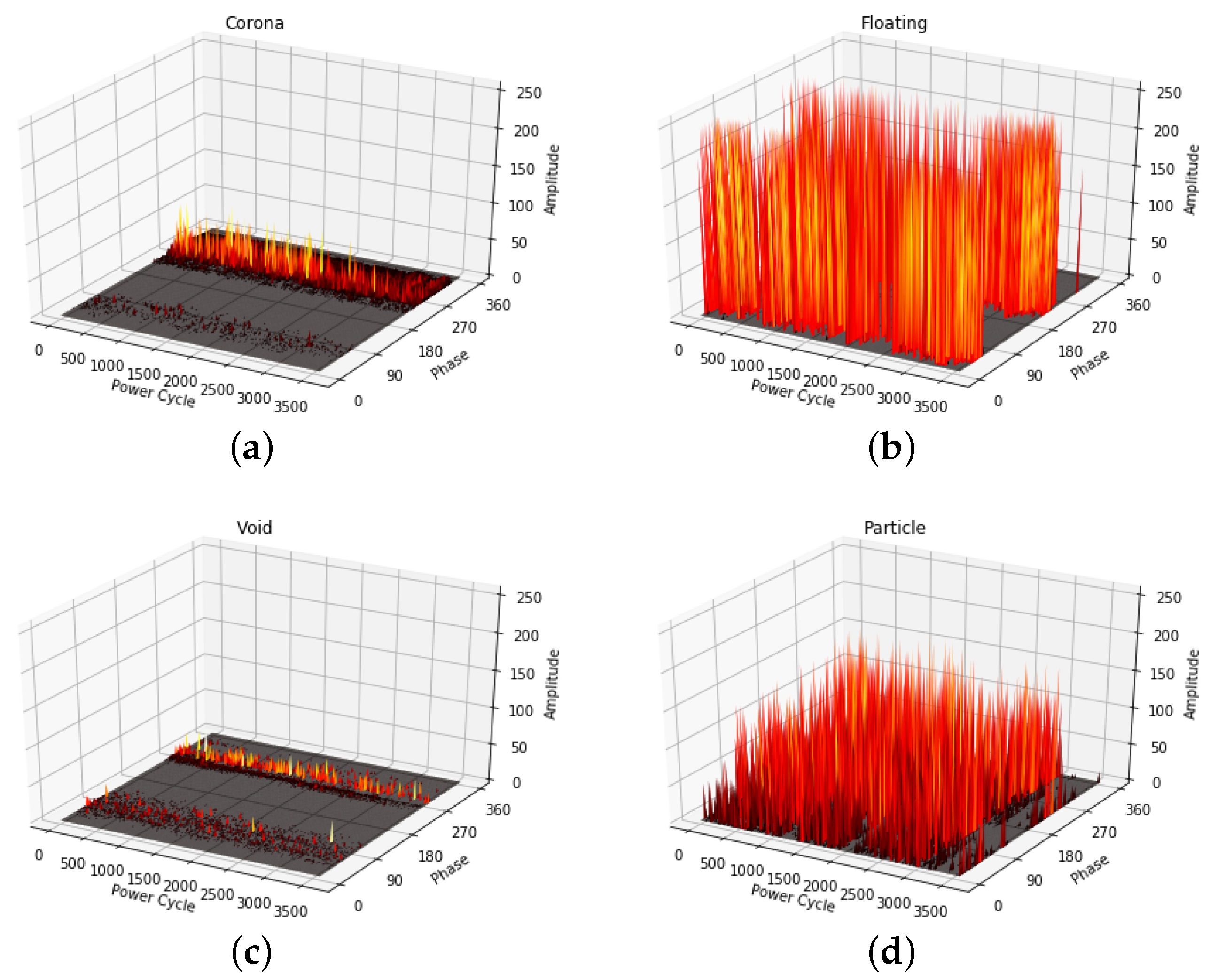
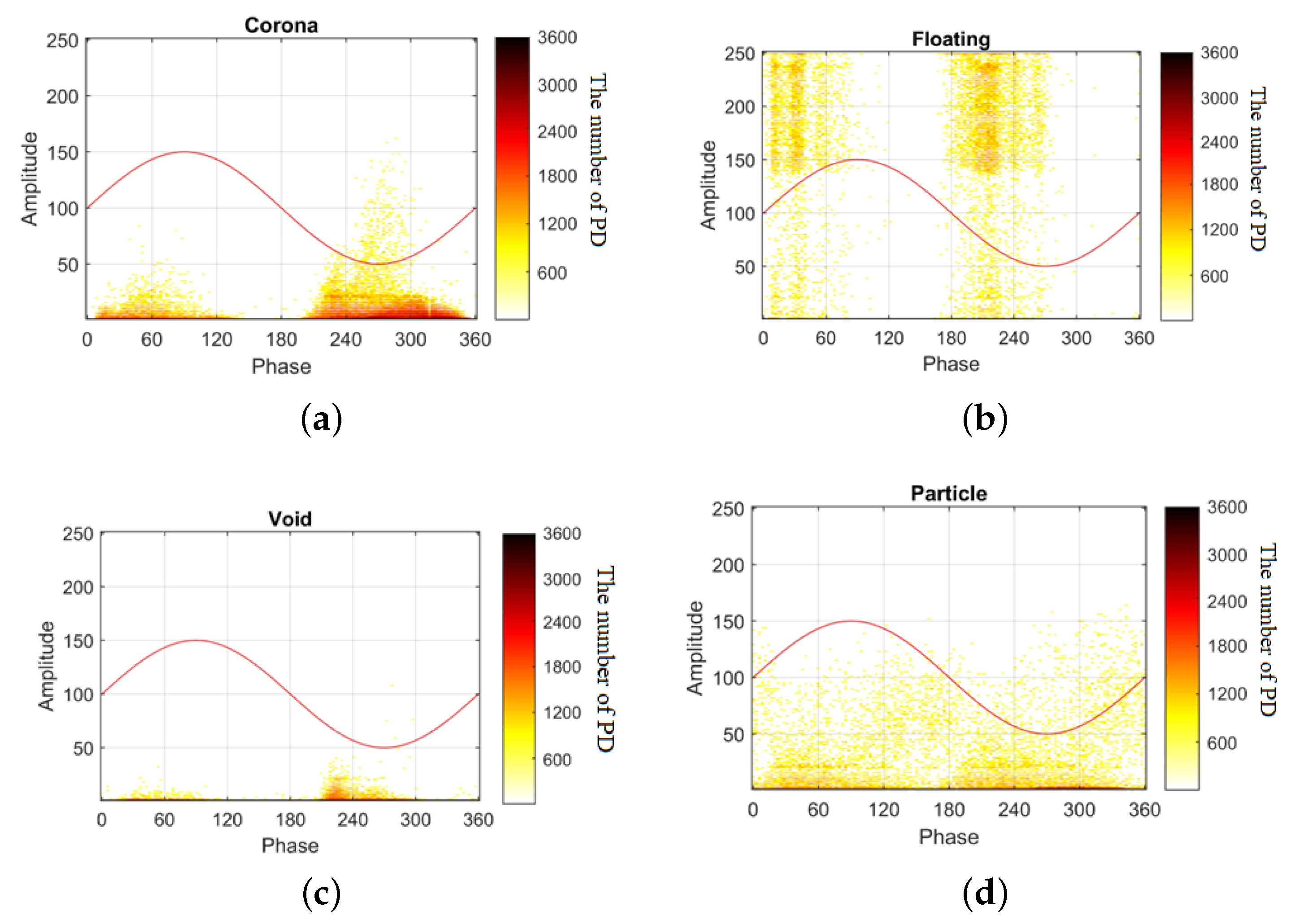
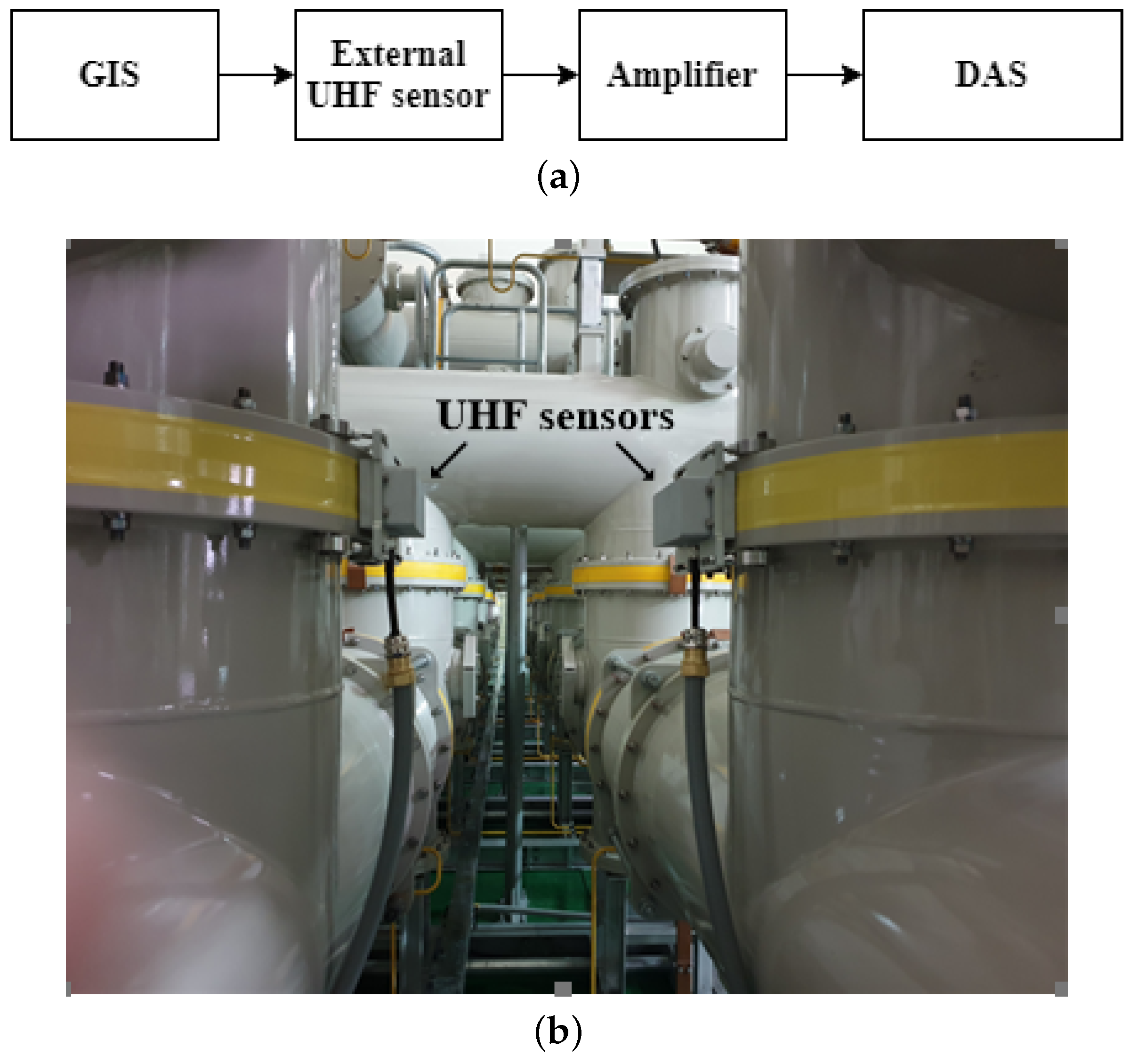
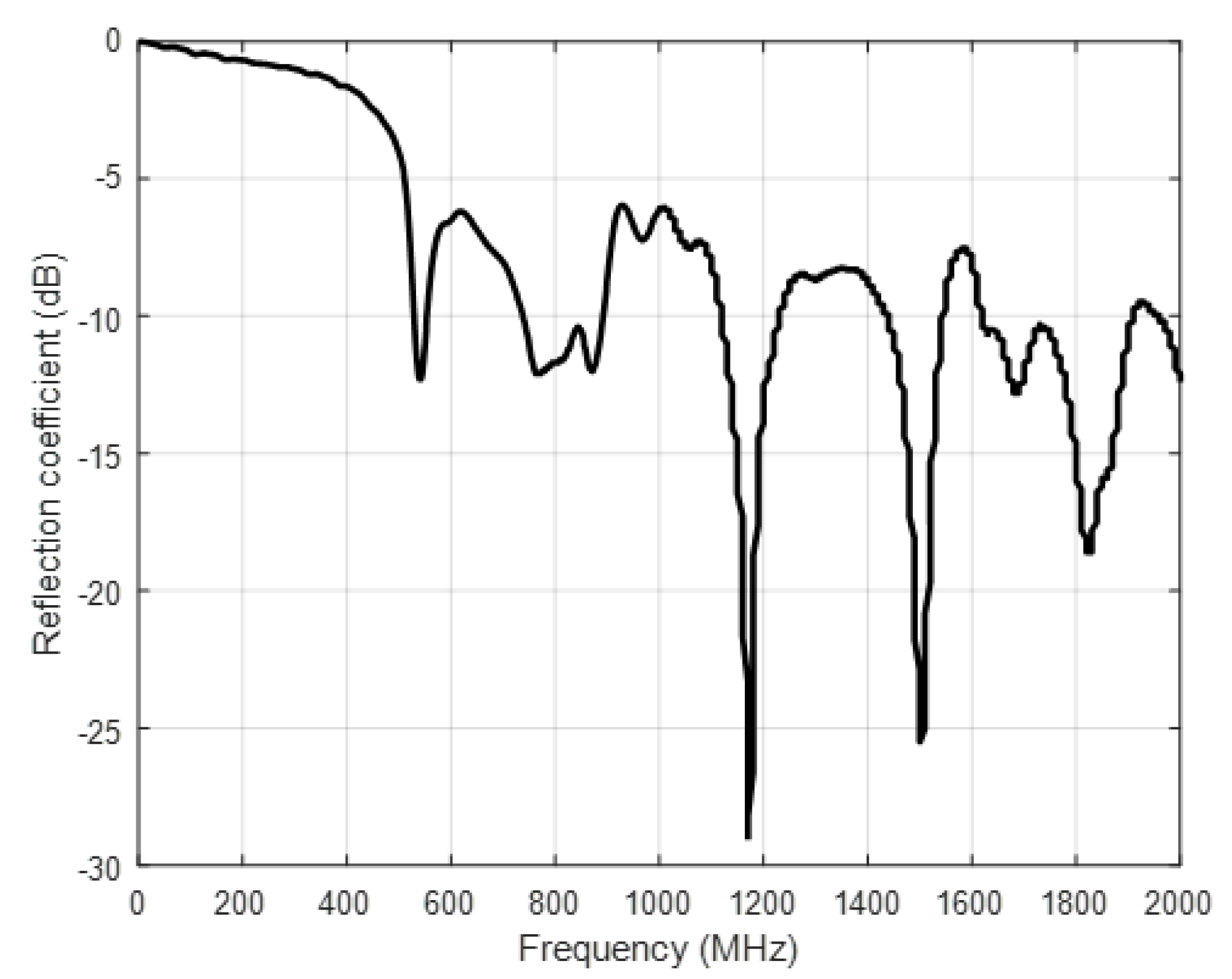
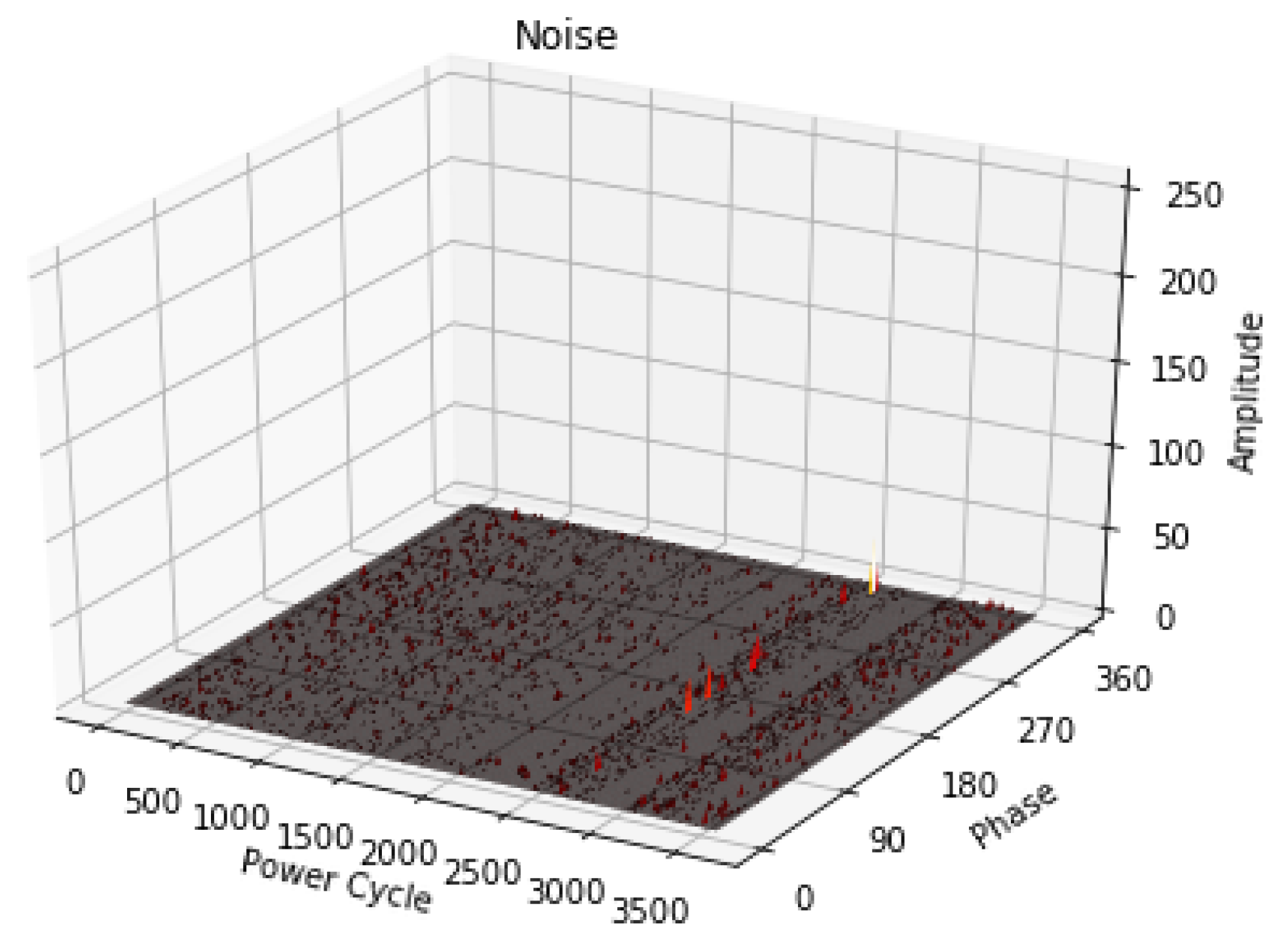
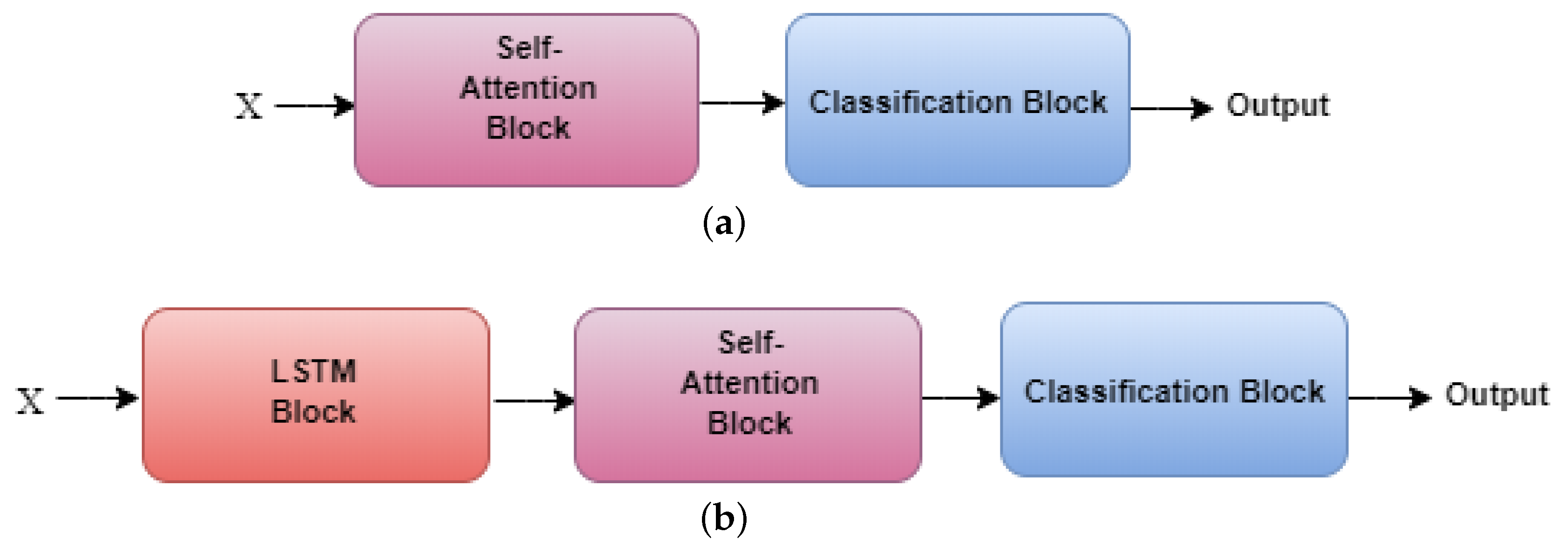

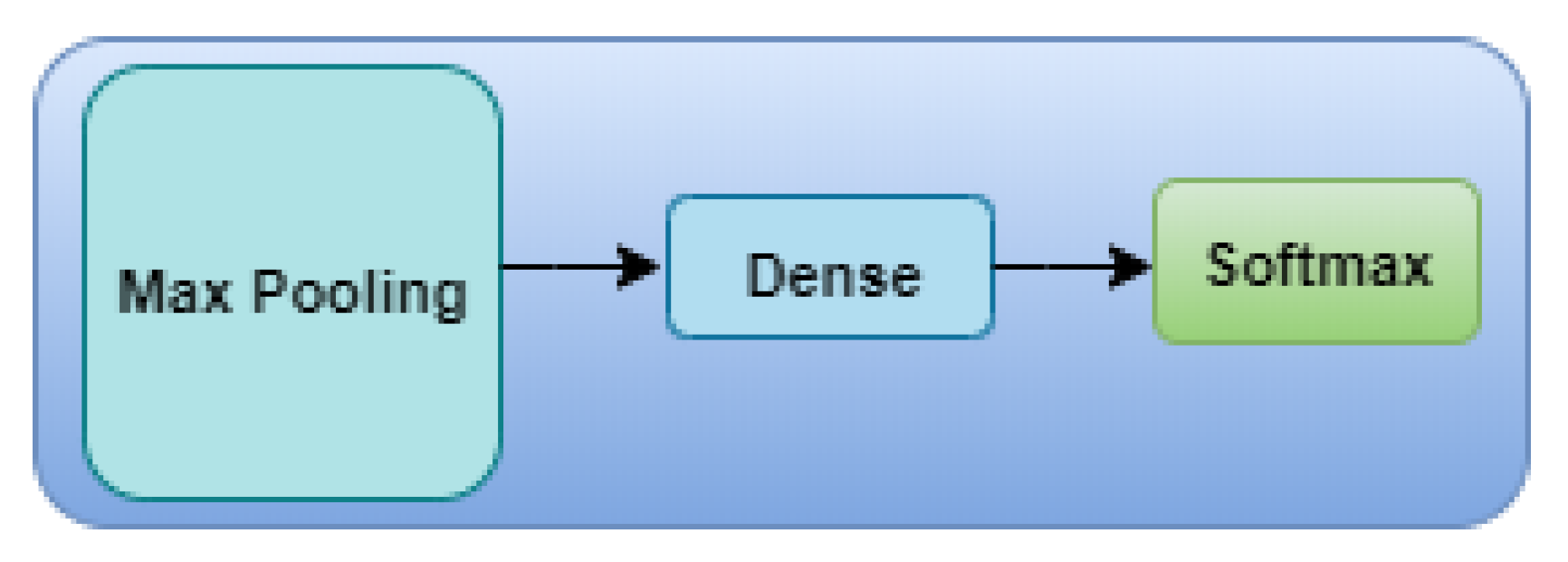
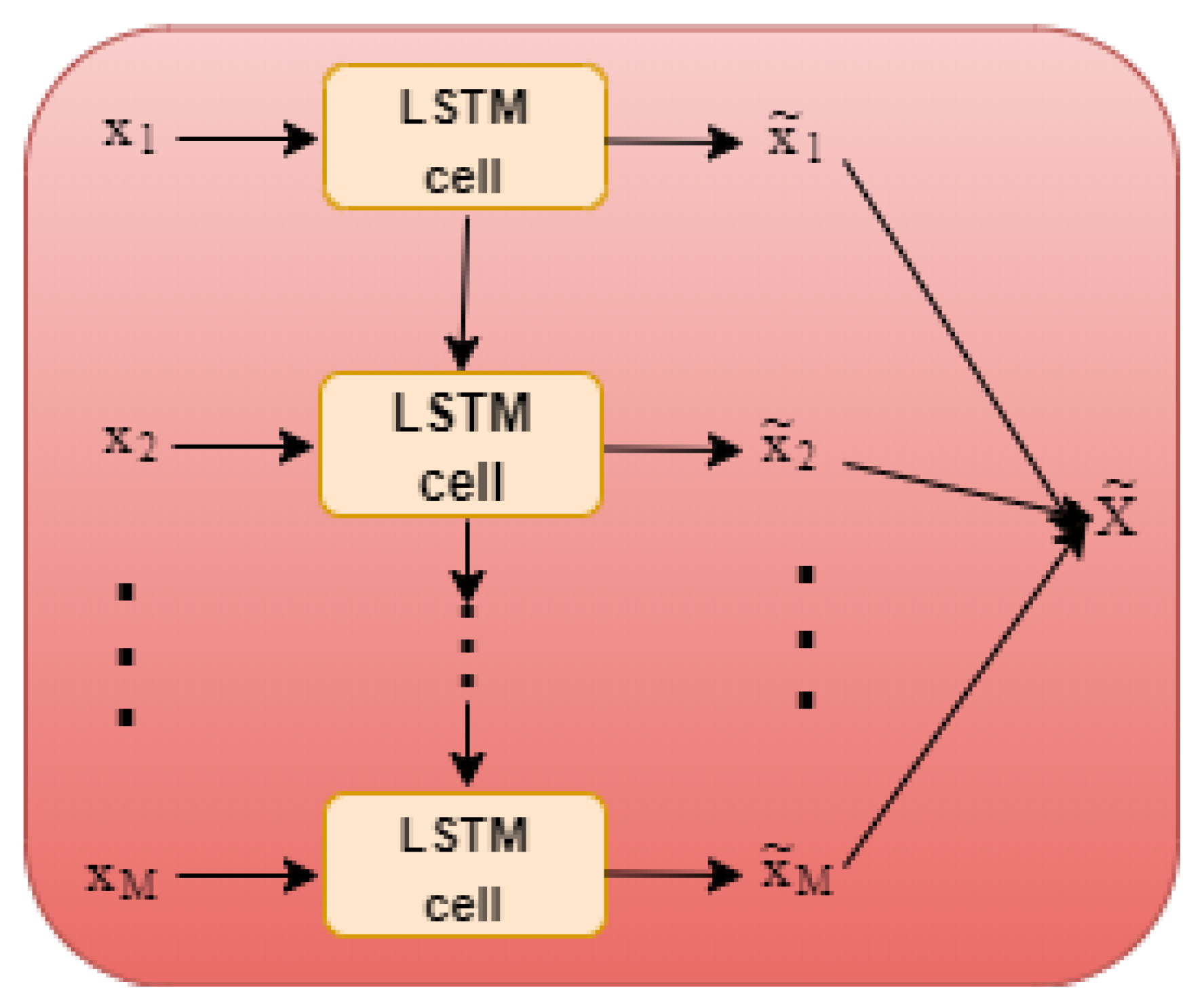
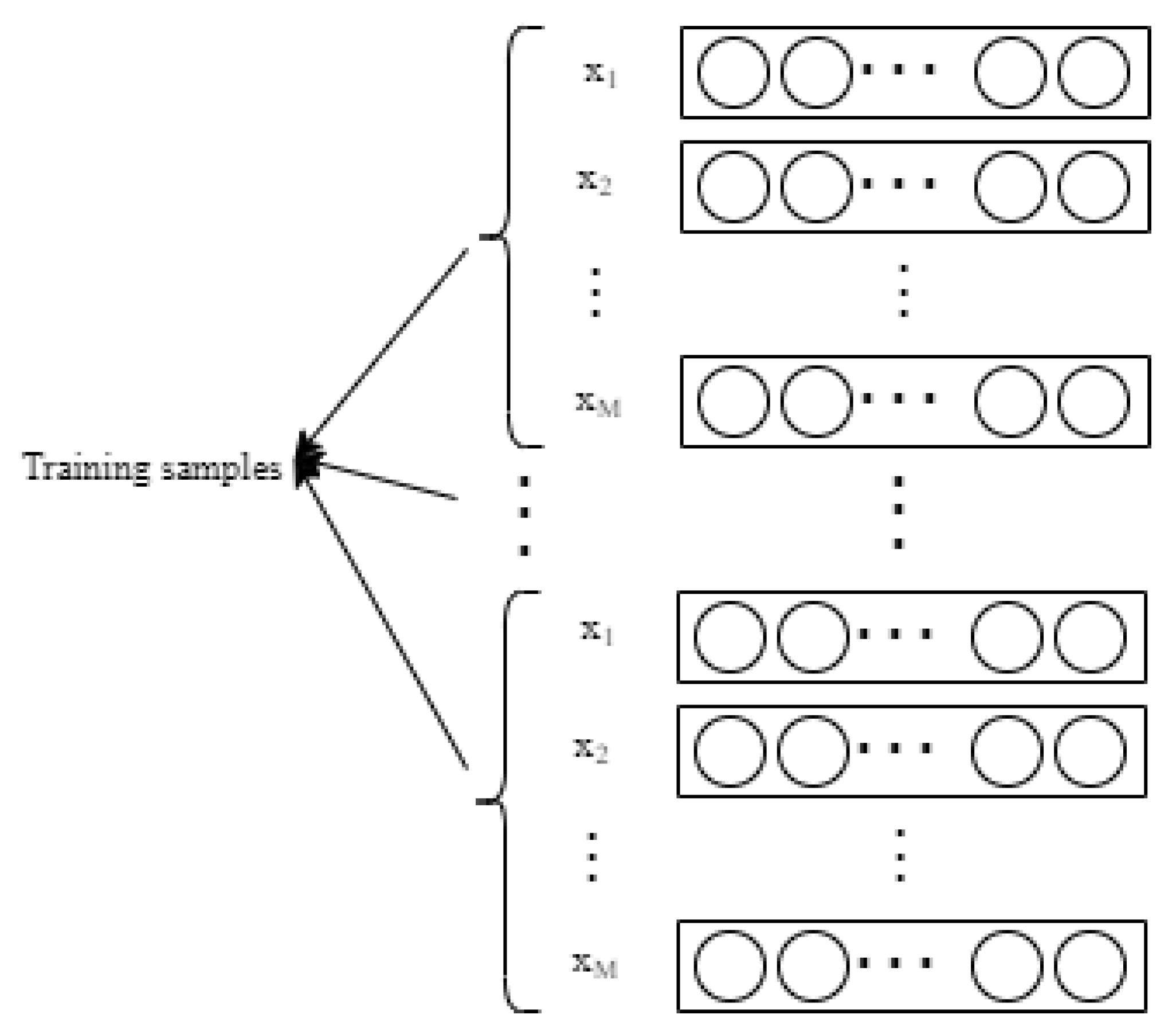
| Fault Types | Corona | Floating | Particle | Void | Noise |
|---|---|---|---|---|---|
| Number of experiments | 94 | 35 | 66 | 242 | 298 |
| Layer Name | Output Dimension | Activation Function | Numberof Parameters |
|---|---|---|---|
| Input Layer | - | 0 | |
| i-th Self-attention | - | 6144 | |
| Concatenate | - | 0 | |
| Add | - | 0 | |
| Dense Layer 1 | ReLU | 16,512 | |
| Dense Layer 2 | - | 16,512 | |
| Add | - | 0 | |
| Max pooling | - | 0 | |
| Dense Layer 3 | ReLU | 8256 | |
| Dense Layer 4 | Softmax | 325 |
| Layer Name | Output Dimension | Activation Function | Numberof Parameters |
|---|---|---|---|
| Input Layer | - | 0 | |
| LSTM | - | 131,584 | |
| i-th Self-attention | - | 6144 | |
| Concatenate | - | 0 | |
| Add | - | 0 | |
| Dense Layer 1 | ReLU | 16,512 | |
| Dense Layer 2 | - | 16,512 | |
| Add | - | 0 | |
| Max pooling | - | 0 | |
| Dense Layer 3 | ReLU | 8256 | |
| Dense Layer 4 | Softmax | 325 |
| Fault Types | Overall | Corona | Floating | Particle | Void | Noise |
|---|---|---|---|---|---|---|
| LSTM RNN [46] | 92.5 | 94.8 | 80.0 | 69.9 | 96.7 | 94.5 |
| SANPD | 93.8 | 95.0 | 81.4 | 85.5 | 96.7 | 94.2 |
| LSANPD | 94.0 | 95.4 | 81.9 | 81.8 | 97.7 | 94.5 |
| Model | Numberof Parameters | Training Time | Test Time |
|---|---|---|---|
| LSTM RNN [46] | 264 k | 667 | 217 |
| SANPD | 90 k | 420 | 210 |
| LSANPD | 222 k | 974 | 284 |
© 2020 by the authors. Licensee MDPI, Basel, Switzerland. This article is an open access article distributed under the terms and conditions of the Creative Commons Attribution (CC BY) license (http://creativecommons.org/licenses/by/4.0/).
Share and Cite
Tuyet-Doan, V.-N.; Nguyen, T.-T.; Nguyen, M.-T.; Lee, J.-H.; Kim, Y.-H. Self-Attention Network for Partial-Discharge Diagnosis in Gas-Insulated Switchgear. Energies 2020, 13, 2102. https://doi.org/10.3390/en13082102
Tuyet-Doan V-N, Nguyen T-T, Nguyen M-T, Lee J-H, Kim Y-H. Self-Attention Network for Partial-Discharge Diagnosis in Gas-Insulated Switchgear. Energies. 2020; 13(8):2102. https://doi.org/10.3390/en13082102
Chicago/Turabian StyleTuyet-Doan, Vo-Nguyen, Tien-Tung Nguyen, Minh-Tuan Nguyen, Jong-Ho Lee, and Yong-Hwa Kim. 2020. "Self-Attention Network for Partial-Discharge Diagnosis in Gas-Insulated Switchgear" Energies 13, no. 8: 2102. https://doi.org/10.3390/en13082102
APA StyleTuyet-Doan, V.-N., Nguyen, T.-T., Nguyen, M.-T., Lee, J.-H., & Kim, Y.-H. (2020). Self-Attention Network for Partial-Discharge Diagnosis in Gas-Insulated Switchgear. Energies, 13(8), 2102. https://doi.org/10.3390/en13082102





